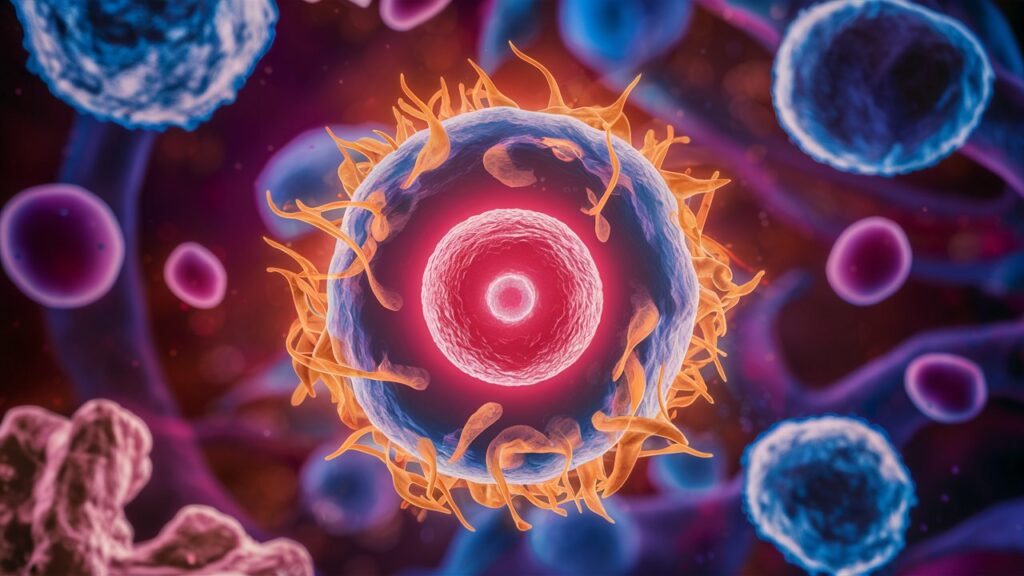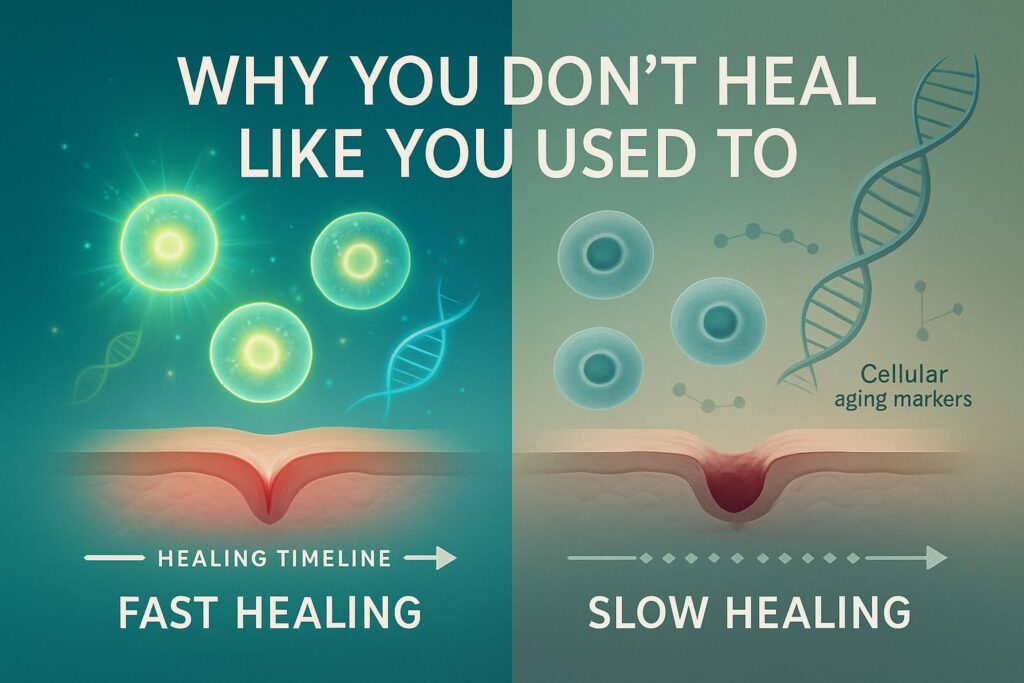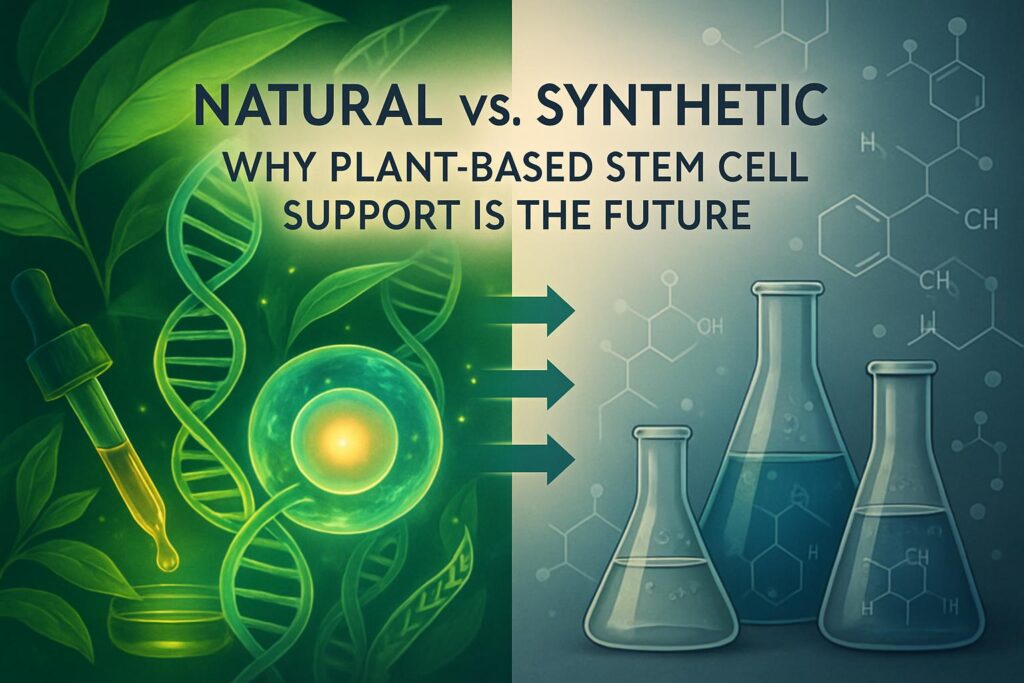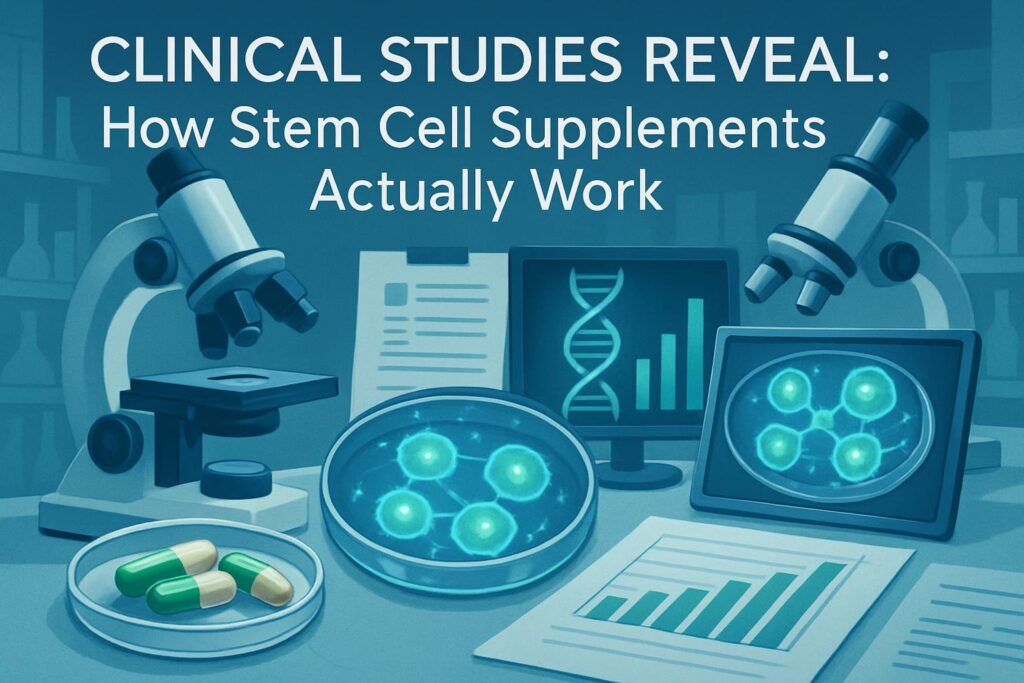Have you ever wondered about the scientific equivalent of a time capsule?
Imagine a technology so advanced it can pause the very essence of life, allowing us to open a window to the future of medical possibilities. Welcome to the world of cryopreservation—a groundbreaking method that is not just about freezing; it’s about defying time.
Stem cells, the body’s cellular handymen, are at the forefront of this scientific frontier. Their ability to repair, regenerate, and replace damaged tissues makes them invaluable. However, the true magic begins when cryopreservation meets stem cell technology.
This is not just science fiction; it’s the reality of regenerative medicine, a realm where stem cells are preserved today to heal the patients of tomorrow.
Cryopreservation is the guardian of these potent cells, safeguarding their potential to save lives and cure diseases that we’re still grappling with. From embryonic stem cells to those harvested from peripheral blood, this method ensures that the precious cargo of life can be stored indefinitely.
Whether it’s for research, stem cell transplantation, or future clinical applications, cryopreservation stands as the sentinel at the gates of time, preserving the hope and promise that stem cells offer to humanity.
In this conversation, we’ll dive deep into the icy waters of cryopreservation, exploring its principles, challenges, and the future it holds for stem cells. We’ll demystify the science, share the stories, and perhaps even crack a cold joke or two along the way.
So, buckle up and get ready to explore the fascinating world of stem cell cryopreservation—where the cool science of freezing meets the warm hope for a healthier tomorrow.
Understanding Stem Cells

Types of Stem Cells
Stem cells are like the Swiss Army knives of the cellular world: versatile, indispensable, and, frankly, a bit mysterious. They come in different flavors, each with its unique abilities and potential applications in medicine. Let’s break down this eclectic mix:
- Embryonic Stem Cells: The Olympians of the stem cell world, capable of transforming into any cell type the body needs. Imagine a cell that could win gold in any event it enters—that’s your embryonic stem cell.
- Adult Stem Cells: The seasoned veterans, found in various tissues like bone marrow and the liver. They’re more specialized than their embryonic counterparts but still hold a treasure trove of regenerative potential.
- Induced Pluripotent Stem Cells (iPSCs): The magicians. Scientists take regular adult cells and whisper a special spell (read: apply genetic factors) to turn them back into stem cells. It’s like convincing a retired athlete to compete again—and win.
Applications of Stem Cells in Medicine
The medical applications of stem cells read like a wish list for future medicine:
- Regenerative Medicine: From mending broken hearts (literally, by repairing heart tissue) to giving sight to the blind (through corneal repair), stem cells are the stars of the show. They’re also making waves in treating conditions like Parkinson’s and diabetes.
- Drug Discovery and Development: Before a new drug graces our medicine cabinets, it must pass the ultimate test: can it work its magic on human cells? Stem cells, especially iPSCs, provide a reliable stand-in for human tissues, making drug testing safer and more effective.
- Disease Modeling: Want to know how a disease progresses without studying it in real people? Enter stem cells. Scientists can model diseases in a dish, studying everything from cancer progression to the impact of genetic mutations.
In essence, stem cells are the utility players of the biomedical field: they can adapt, perform, and, most importantly, offer hope where it’s needed most.
Whether it’s bringing dead cells back to life, modeling diseases to find new cures, or testing drugs to ensure they’re safe, stem cells are at the heart of tomorrow’s medical breakthroughs.
So, when we talk about the preservation of these cellular dynamos through cryopreservation, we’re not just saving cells; we’re saving potential futures.
The Science of Cryopreservation
Navigating the frosty landscape of cryopreservation requires a blend of precision, patience, and a touch of scientific sorcery. It’s like trying to put your garden into hibernation for the winter, ensuring every plant (or in this case, cell) wakes up in spring just as vibrant as before. Let’s defog the windows into this chilly process.
Principles of Cryopreservation
The core principle of cryopreservation is simple: slow down time to a near standstill, preserving cells in a state of suspended animation. However, achieving this without turning our precious stem cells into ice sculptures requires a bit of finesse:
- Cooling Rates and Cryoprotectants: The cooling rate must be just right—not too fast, not too slow, like Goldilocks’s porridge. Add to this a dash of cryoprotectants, substances that protect the cells from ice damage by preventing ice crystal formation within the cells. Think of them as the cell’s personal antifreeze.
- Ice Formation and Its Effects on Cells: Ice is the arch-nemesis of cell integrity. Uncontrolled ice formation can puncture and dehydrate cells, turning our hopes for future therapies into frozen dreams. The goal is to avoid this by ensuring ice forms around, but not within, the cells.
Methods of Cryopreservation
- Slow Freezing: The traditional route, like marinating your favorite dish overnight. The cells are cooled slowly, allowing for a controlled ice formation. It’s reliable but can be time-consuming and requires precise temperature control.
- Vitrification: The fast and furious approach. Cells are cooled so rapidly that water doesn’t have time to form ice crystals and instead transitions into a glass-like state. It’s like flash-freezing a superhero mid-action, preserving them perfectly in time.
Storage and Thawing Protocols
Once the cells are frozen, they embark on their journey through time in the deep freeze, waiting for the day they’ll be awakened. This isn’t your average freezer, though; we’re talking about temperatures that would make the Arctic blush, typically in liquid nitrogen at -196°C (-321°F).
Thawing, on the other hand, is a delicate dance to ensure the cells don’t suffer from thermal shock. It requires rapid warming to prevent ice crystal formation during the thaw, followed by a careful reintroduction to their new environment.
Cryopreservation is the gatekeeper of stem cell potential, enabling these cellular powerhouses to be stored indefinitely and accessed when needed for research or therapy. It’s a process that balances on the edge of nature’s laws, pushing the boundaries of what’s possible in medicine and science.
Through careful manipulation of temperature and chemistry, we ensure that the future of regenerative medicine remains frozen in time, ready to spring into action when called upon.
Challenges and Solutions in Stem Cell Cryopreservation
Embarking on the journey of cryopreservation is akin to navigating an icy path laden with pitfalls and promises. It’s not just about freezing stem cells; it’s about awakening them from their slumber, ready to fulfill their medical destiny.

Let’s unravel the frosty challenges and the innovative solutions that keep the future of regenerative medicine as bright as a sunny day in winter.
Ensuring Viability and Functionality Post-Thaw
The first hurdle is akin to waking up on a cold morning; the cells must emerge from their icy nap functional and unharmed. Cell viability and functionality post-thaw are paramount. Sometimes, cells wake up a bit groggy, affecting their ability to proliferate or differentiate.
Solution: Scientists employ optimized thawing protocols and post-thaw culture conditions, essentially giving the cells a warm blanket and a hot drink to help them recover their vitality.
Minimizing Ice Crystal Formation
Ice crystal formation is the villain of our story, threatening to puncture and deform our heroic cells.
Solution: The use of cryoprotectants, like dimethyl sulfoxide (DMSO), acts as the hero’s shield, protecting the cells from icy spears. Advances in cryoprotectant cocktails and the method of vitrification are akin to giving our hero a faster, stronger shield, reducing the risk of ice damage.
Optimizing Cryoprotectant Strategies
While cryoprotectants are lifesavers, they’re not without their own challenges—too much of a good thing can be harmful. High concentrations can be toxic to cells, a classic case of the cure being as dangerous as the disease.
Solution: Researchers are fine-tuning the types and concentrations of cryoprotectants, along with exploring nontoxic alternatives. It’s like adjusting the seasoning in a recipe until it’s just right.
Addressing Scale-Up Challenges for Clinical Applications
Scaling up cryopreservation for clinical use is like planning a banquet after perfecting a dish for two. Ensuring consistent cell quality in larger volumes is crucial for therapies like stem cell transplantation.
Solution: Automation and standardized cryopreservation protocols are key. Automating the process ensures consistency, reduces human error, and scales up from laboratory research to clinical application smoothly, ensuring every stem cell treatment is as potent as the last.
In the frost-tipped realm of stem cell cryopreservation, scientists are the unsung heroes, wielding their knowledge against the cold challenges of nature.
With every challenge surmounted, the field moves one step closer to harnessing the full potential of stem cells in regenerative medicine, turning the once-distant dreams of curing the incurable into a tangible, frost-covered reality.
Ethical and Regulatory Considerations
As we navigate the icy realms of stem cell cryopreservation, we find ourselves at the crossroads of science and ethics, a place where the air is not only cold but also thick with debate and deliberation. It’s like venturing into a blizzard, where visibility is low, and each step must be taken with care and consideration.
Ethical Issues Surrounding Stem Cell Research and Use
The ethical landscape of stem cell research is as complex and varied as a snowflake, each point reflecting concerns over the origin of embryonic stem cells, consent, and the purpose of research.
It’s akin to making sure every snowflake in a snowstorm is accounted for, ensuring that the pursuit of scientific knowledge does not trample on ethical grounds.
Solution: Engaging in open, transparent dialogues with the public and stakeholders, and adhering to strict ethical guidelines, ensures that stem cell research and cryopreservation navigate these snowy fields with integrity. Ethical oversight committees serve as the compass, guiding scientists through the storm.
Regulatory Frameworks Governing Stem Cell Cryopreservation
The regulatory landscape for stem cell cryopreservation is a map with constantly shifting territories. Different countries have different rules, akin to varying weather patterns across a continent. Navigating this requires a keen understanding of local and international regulations, ensuring that stem cell therapies are not only effective but also safe and legal.
Solution: Standardization of cryopreservation protocols and international cooperation among regulatory bodies are the beacons that guide this journey. By harmonizing regulations, the field of cryopreservation can move forward more cohesively, ensuring that stem cells reach their therapeutic destinations safely.
The Role of International Standards and Best Practices
In the quest to standardize the cryopreservation of stem cells, international standards and best practices serve as the North Star, guiding scientists and clinicians towards excellence and safety.
It’s about building a lighthouse that illuminates the best path forward, ensuring that every cryopreservation procedure, from peripheral blood stem cells to umbilical cord blood, meets the highest standards of quality and efficacy.
Solution: Collaborative efforts, such as those by the International Society for Cellular Therapy and other organizations, work towards creating a unified framework for cryopreservation. These efforts ensure that stem cells are preserved not just with scientific rigor but with a commitment to ethical and regulatory excellence.
Navigating the ethical and regulatory landscapes of stem cell cryopreservation is no easy feat. It requires a careful balance of scientific ambition and ethical responsibility, ensuring that the future of regenerative medicine is not only bright but also morally sound and universally accepted.
In this frosty journey, the warmth of ethical consideration and the light of regulatory guidance are our most trusted companions, leading the way towards a future where stem cells can realize their full potential for healing.
Conclusion
As we emerge from the frost-tinged world of stem cell cryopreservation, it’s clear that this journey through the icy realms of science and ethics is not just a tale of preserving cells; it’s a narrative about safeguarding the future of medicine itself.
The convergence of cryopreservation with stem cell technology is akin to discovering a map to a treasure trove of medical possibilities, where diseases once deemed incurable find hope in the form of tiny, frozen cells.
The critical role of cryopreservation in advancing stem cell therapies cannot be overstated. It’s the backbone of regenerative medicine, allowing us to store today’s scientific miracles for tomorrow’s treatments. Like a library preserving knowledge for future generations, cryopreservation ensures that the potential of stem cells is not lost to time but is available when and where it’s needed most.
Yet, the path forward is not without its challenges. From the scientific hurdles of ensuring cell viability post-thaw to the ethical and regulatory mazes that govern the use of stem cells, the journey of cryopreservation is a testament to human ingenuity and perseverance. It’s a field where scientists, ethicists, and regulators dance a delicate ballet, balancing the potential for life-changing treatments with the need for moral and legal oversight.
The need for continued research and development is as clear as a starlit winter night. With every breakthrough in cryopreservation techniques and every innovation in stem cell application, we edge closer to a future where the phrase “incurable disease” becomes a relic of the past. It’s a future where the preservation of life, in all its cellular complexity, is not just a possibility but a reality.
In conclusion, the fusion of cryopreservation and stem cell science stands as one of the most exciting frontiers in modern medicine. As we chart this icy but hopeful terrain, let us move forward with the warmth of human empathy, the light of ethical guidance, and the steadfast commitment to transforming the frost of preservation into the dawn of healing.
The journey of cryopreservation is far from over, but together, we can ensure it leads to a future where life, in all its forms, is cherished, celebrated, and, most importantly, healed.



